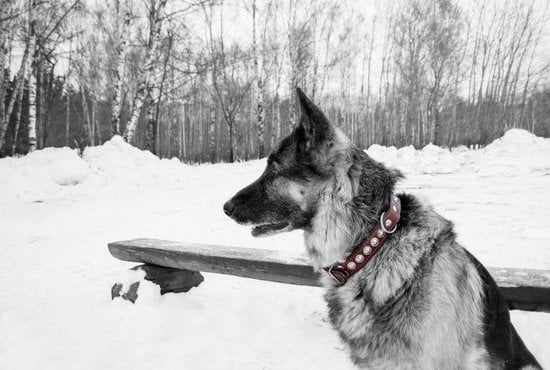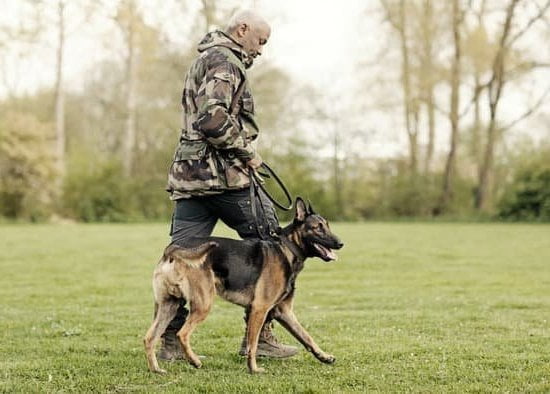Crate training is an essential skill for any dog owner, but it can be particularly beneficial for rescue dogs. It provides them with a sense of security and a safe space to call their own. In this article, we will discuss the importance of crate training for rescue dogs and provide valuable tips on how to successfully introduce this training technique to your new four-legged family member.
Rescue dogs often come from uncertain or traumatic backgrounds and may struggle with feelings of anxiety or insecurity. Crate training can help them feel more secure and comfortable in their new environment by providing them with a designated space where they can retreat to when feeling overwhelmed. It also teaches them valuable skills such as self-control, bladder and bowel control, and how to settle down for rest.
When it comes to crate training rescue dogs, there are several important factors to consider. First and foremost, choosing the right crate is essential. It should be spacious enough for your dog to stand up, turn around, and lie down comfortably, but not too big that it encourages eliminating inside the crate. Additionally, establishing positive associations with the crate and gradually introducing your rescue dog to it are crucial steps in the process.
Crate training can be a transformative experience for both you and your rescue dog. With patience, consistency, and understanding, you will build a strong foundation for a positive relationship with your new pet while providing them with a safe haven they can call their own. In the sections that follow, we will delve into specific strategies and techniques to help make crate training a success for you and your rescue dog.
Choosing the Right Crate for Your Rescue Dog
When it comes to crate training your rescue dog, one of the most important steps is choosing the right crate. The crate will serve as your dog’s safe space and den, so it’s essential to select one that is comfortable and appropriate for your dog’s size and needs. Here are some things to consider when choosing the right crate for your rescue dog:
- Size: It’s crucial to choose a crate that is the right size for your rescue dog. The crate should be large enough for your dog to stand up, turn around, and lie down comfortably. However, it should not be so large that your dog can use one end as a bathroom area.
- Material: Crates come in a variety of materials, including plastic, wire, and fabric. Consider your dog’s temperament and behavior when selecting the material for the crate. For example, if your rescue dog tends to chew or scratch, a sturdy wire crate may be the best option.
- Accessibility: Some crates have doors on the front, while others have doors on the side or top. Consider how your rescue dog will enter and exit the crate, as well as how easy it will be for you to clean and maintain.
Once you have chosen the right crate for your rescue dog, it’s important to make sure that it is set up properly in a suitable location within your home. This will help create a positive environment for the introduction and training process of using the selected crate.
By understanding what factors go into making sure you’ve chosen a proper escape prevention tool that can help form good habits with staff members during this time period; finding something that they’re comfortable with upon arrival after being recently adopted.
Introducing Your Rescue Dog to the Crate
Understanding Your Rescue Dog’s Background
Before you start crate training your rescue dog, it’s important to understand their background and history. Many rescue dogs may have had negative experiences with confinement or abandonment, so the idea of being confined in a crate can be stressful for them. Take the time to learn about your dog’s past and any potential triggers that may make crate training more challenging.
Slow and Gentle Approach
When introducing your rescue dog to the crate, it’s crucial to take a slow and gentle approach. Avoid forcing your dog into the crate or using it as a punishment. Instead, allow your dog to explore the crate at their own pace. Place treats and toys inside the crate to entice them to go in voluntarily. It may take some time for your rescue dog to feel comfortable being inside the crate, so patience is key.
Positive Reinforcement
Using positive reinforcement is essential when introducing your rescue dog to the crate. Every time your dog voluntarily enters the crate, praise them and offer a tasty treat. This will help create a positive association with the crate and encourage your dog to view it as a safe and comfortable space. Avoid using negative reinforcement or scolding when they resist going into the crate, as this can create fear and anxiety around the training process.
Establishing a Positive Association With the Crate
When introducing your rescue dog to the crate, keep the door open and allow them to explore it at their own pace. Avoid forcing them into the crate or shutting the door right away, as this can create fear and anxiety. Instead, use positive reinforcement by providing treats and praise when your dog shows interest in the crate or approaches it willingly. This will help them associate the crate with positive experiences and reduce any apprehension they may have.
Another effective way to establish a positive association with the crate is through mealtime. Place your rescue dog’s food bowl near the entrance of the crate and gradually move it inside over several days. Eventually, you can start feeding your dog inside the crate with the door open, then progress to closing the door for short periods while they eat.
This will help your rescue dog feel comfortable and relaxed inside their new den-like environment. By taking these gradual steps, you can help your rescue dog build a positive association with their crate and make them feel secure and content during training sessions.
Overall, establishing a positive association with the crate is essential in successful training for rescue dogs that may have fears or anxieties about confinement. By creating a welcoming environment inside the crate and using positive reinforcement techniques, you can help your rescue dog feel comfortable and secure in their new space as they learn how to adjust to being crated.
With patience and consistency, you can help alleviate any negative associations they may have had in the past and make their transition to being crated as smooth as possible.
Crate Training Schedule for Rescue Dogs
Crate training can be an essential tool in helping rescue dogs adapt to their new home and routine. Creating a crate training schedule for your rescue dog is crucial in establishing a sense of security and comfort, especially if they have experienced trauma or instability in the past. By following a consistent schedule, you can help your rescue dog feel safe and comfortable in their new environment while also teaching them important house manners.
When creating a crate training schedule for your rescue dog, it’s important to start slowly and gradually increase the time they spend in the crate. Begin by introducing your dog to the crate in short intervals throughout the day, allowing them to explore and become familiar with it at their own pace. You can place treats, toys, or even their meals inside the crate to create a positive association with it.
As your rescue dog becomes more comfortable with the crate, gradually increase the length of time they spend inside. Start by crating them for short periods while you are home, such as during meal times or when you need to step out briefly.
This will help them get used to being confined without feeling anxious or distressed. It’s important to make sure that each session in the crate is a positive experience for your rescue dog, so they learn to associate it with safety and relaxation.
As you continue to build your rescue dog’s confidence and trust through crate training, you can begin leaving them in the crate for longer periods when you need to be away from home. Remember to always provide plenty of mental and physical stimulation before crating your dog for an extended period, such as going for a walk or engaging in playtime together. Consistency and patience are key when creating a successful crate training schedule for your rescue dog.
Dealing With Separation Anxiety During Crate Training
It is not unusual for rescue dogs to experience separation anxiety, especially when being introduced to a new environment or when in the process of crate training. It is important to handle this situation with patience and understanding to help your rescue dog feel comfortable and secure in their crate. Here are some tips on how to deal with separation anxiety during crate training:
1. Gradual Introduction: Start by gradually introducing your rescue dog to the crate, allowing them to explore it at their own pace. Leave the door open and place treats or toys inside to encourage positive associations with the crate.
2. Desensitization Techniques: Practice short periods of crating while you are home, gradually increasing the time your rescue dog spends in the crate. This will help them get used to being alone without feeling anxious.
3. Calm Departures and Arrivals: When leaving your rescue dog in the crate, avoid making a big fuss or emotional farewell. Similarly, keep arrivals low-key as well. This will help reduce your dog’s anxiety around transitions in and out of the crate.
4. Comfort Items: Consider placing a blanket or an article of clothing with your scent inside the crate to provide comfort and reassurance for your rescue dog while they are crated.
By following these strategies, you can help alleviate separation anxiety during crate training and create a positive and calming environment for your rescue dog as they adjust to their new routine.
Remember that every rescue dog is unique, so it may take time for them to feel completely comfortable in the crate. Remain patient and consistent in your approach, and always reward good behavior with praise and treats as they progress through their crate training journey.
Tips for Successful Crate Training With a Rescue Dog
Provide Positive Reinforcement
When crate training your rescue dog, it’s important to provide positive reinforcement to help them associate the crate with a safe and comfortable space. Use treats, toys, and praise to encourage your dog to enter the crate willingly. Reinforce good behavior by rewarding them when they are calm and relaxed inside the crate.
Be Patient and Consistent
Crate training a rescue dog can take time, especially if they have had negative experiences with confinement in the past. It’s important to be patient and consistent with the training process. Avoid using the crate as a form of punishment and instead focus on creating a positive environment for your dog.
Gradually Increase Crate Time
Start with short periods of time in the crate and gradually increase the duration as your rescue dog becomes more comfortable. This will help prevent any anxiety or stress associated with being confined in the crate for extended periods. Pay attention to your dog’s body language and behavior to gauge their comfort level with crate training.
By following these tips, you can effectively crate train your rescue dog and provide them with a safe and secure space that they can call their own. Remember that every dog is unique, so be patient and tailor your approach to fit your dog’s individual needs.
Troubleshooting Common Crate Training Challenges
Crate training can be a valuable tool for helping your rescue dog adjust to their new home and routine. However, it’s not always smooth sailing. Many rescue dogs come with their own set of challenges that can make crate training more difficult. Here are some common crate training challenges and how to troubleshoot them.
One common challenge when crate training a rescue dog is separation anxiety. Many rescue dogs have experienced trauma or abandonment, which can lead to intense anxiety when separated from their new owners. To address this, it’s important to take things slow and gradually increase the time your dog spends in the crate. You can also try leaving an item of clothing with your scent in the crate to provide comfort.
Another common challenge is that some rescue dogs may have negative associations with crates due to past experiences. If your rescue dog seems fearful or hesitant about entering the crate, it’s important to be patient and offer plenty of positive reinforcement. Encourage your dog to explore the crate on their own terms, using treats and praise to create a positive association.
It’s also common for rescue dogs to exhibit signs of distress or discomfort while in the crate, such as whining, barking, or destructive behavior. In these cases, it’s important not to give in and let your dog out of the crate when they are exhibiting these behaviors.
Doing so will only reinforce the negative behavior. Instead, wait for a moment of calm before letting them out and continue working on creating positive associations with the crate through treats and praise.
| Common Crate Training Challenges | Troubleshooting Tips |
|---|---|
| Separation anxiety | Gradually increase time spent in the crate; leave item with owner’s scent |
| Negative association with crates | Be patient; use treats and praise to create positive association |
| Distress or discomfort in the crate | Avoid giving in to negative behavior; wait for calm before letting them out; use treats and praise for positive reinforcement |
Gradual Transition to Leaving Your Rescue Dog Alone in the Crate
Introducing your rescue dog to the crate is just the beginning of crate training. The ultimate goal is for your dog to feel comfortable and secure spending time alone in the crate. This gradual transition is important for both your dog’s well-being and your peace of mind.
Start by leaving the crate door open when you are home so that your rescue dog can come and go as they please. Place their favorite toys, treats, and bedding inside to create a positive association with the crate. Encourage them to explore and spend time in the crate voluntarily.
Once your rescue dog is comfortable going in and out of the crate on their own, you can start practicing leaving them alone for short periods. Begin with just a few minutes at a time while you are still at home, gradually increasing the duration as your dog becomes more relaxed and confident in the crate.
It’s important to remember that every rescue dog is different, and some may take longer to adjust than others. Be patient and understanding as you work on this gradual transition.
Consider seeking professional assistance if your rescue dog shows signs of distress or anxiety during the process of being left alone in the crate. Remember that building trust and a positive association with the crate takes time, but it will ultimately benefit both you and your rescue dog in the long run.
Celebrating Milestones and Progress in Crate Training Your Rescue Dog
In conclusion, crate training a rescue dog can be a challenging but ultimately rewarding experience for both you and your furry friend. It is important to understand the significance of crate training for rescue dogs, as it provides them with a safe and secure space while also aiding in housebreaking and preventing destructive behavior.
By choosing the right crate, introducing your rescue dog to the crate gradually, and establishing a positive association with the crate, you can set the foundation for successful crate training.
As you progress through the crate training schedule for your rescue dog, it’s crucial to address any separation anxiety that may arise. Patience and consistency are key as you work through any challenges that may come up during the process. Remember to celebrate small victories and milestones along the way, such as when your rescue dog willingly enters their crate or remains calm while inside.
It’s important to remember that every rescue dog is unique, and their journey with crate training may differ from others. By following these tips for successful crate training with a rescue dog and seeking guidance when faced with common challenges, you can create a peaceful and comfortable environment for your furry companion. With time, patience, and love, your rescue dog can become acclimated to their crate in a positive way.
Frequently Asked Questions
How Long Does It Take to Crate Train a Rescue Dog?
The time it takes to crate train a rescue dog can vary depending on the dog’s past experiences and temperament. Some dogs may adjust quickly, while others may take longer. Patience and consistency are key in this process.
How Do I Stop My Rescue Dog From Crying in the Crate?
To stop a rescue dog from crying in the crate, it’s important to first make sure their basic needs are met – they should have gone to the bathroom, eaten, and had some exercise before being crated. It’s also helpful to make the crate a positive space by using treats or toys.
Should You Crate Train an Adopted Dog?
Crate training an adopted dog can be beneficial for both the dog and the owner. It can provide a safe space for the dog when needed, assist in house training, and help with managing behavior. However, it’s important to do so with patience and positive reinforcement.

Welcome to the blog! I am a professional dog trainer and have been working with dogs for many years. In this blog, I will be discussing various topics related to dog training, including tips, tricks, and advice. I hope you find this information helpful and informative. Thanks for reading!





